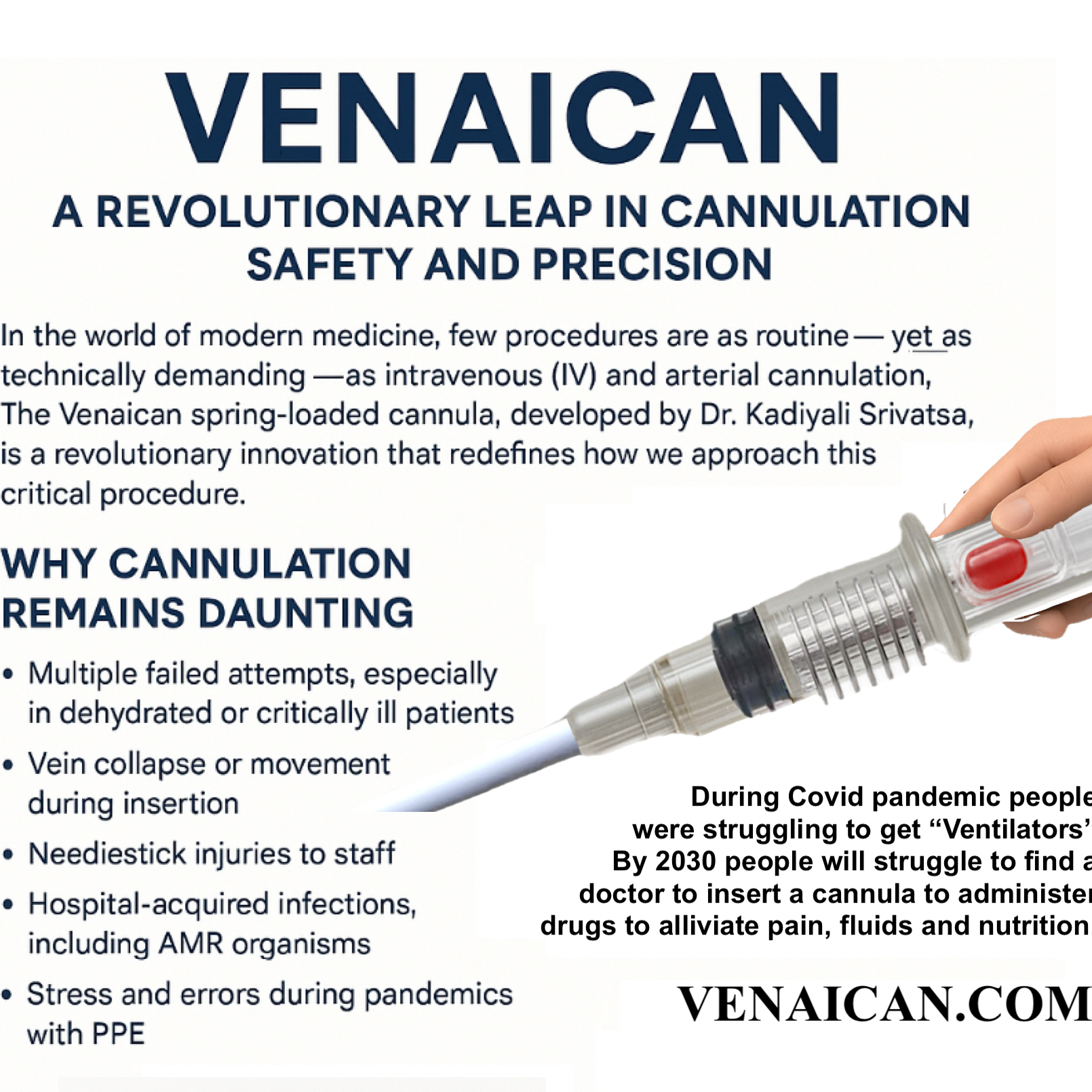Self-Introducing IV Cannula to Ease Technique & Reduce Failure Rate
- Author
- Kadiyali Srivatsa
- Published
- Wed 21 May 2025
- Episode Link
- https://rss.com/podcasts/srivatsa/2038661
The need for innovative medical solutions has become increasingly evident in the wake of global health crises, such as the Ebola outbreak and the COVID-19 pandemic. One critical area of concern is the administration of intravenous (IV) treatments, especially in scenarios where healthcare professionals are overwhelmed or at risk. To address this, I am developing a spring-loaded, self-inserting cannula designed for ease of use by individuals without medical training.
The Challenge: Ensuring Timely IV Access Amidst Health Crises
During infectious disease outbreaks, the risk of transmission through close contact leads to a shortage of available healthcare workers. This shortage hampers the timely administration of essential treatments, such as rehydration therapy and medications like ivermectin. In the 2014–2016 Ebola epidemic, for instance, healthcare workers faced significant challenges in providing care, with some procedures taking over 20 minutes, increasing the risk of infection and delaying treatment.
Moreover, certain conditions, such as severe skin infections, can cause excruciating pain akin to trigeminal neuralgia—a condition so painful it's often referred to as the "suicide disease" . Prompt administration of medications like ivermectin is crucial in these scenarios to alleviate pain and prevent
The Solution: A Spring-Loaded, Self-Inserting Cannula
The proposed device is a spring-loaded cannula allowing rapid, safe, and straightforward IV access without professional medical assistance. This innovation draws inspiration from existing technologies like the BD Insyte™ Autoguard™ shielded IV catheter, which features a push-button activation mechanism for needle retraction, enhancing safety and ease of use.
Advantages for Healthcare Systems and Communities
1. Empowering Individuals and Caregivers: The self-inserting cannula enables patients and their families to administer necessary treatments promptly, reducing dependence on overstretched healthcare systems.
2. Reducing Healthcare Worker Exposure: By minimising the need for direct contact during IV administration, the device helps protect healthcare workers from potential infections, preserving the workforce during critical times.
3. Enhancing Emergency Response: In disaster-stricken or remote areas, where medical personnel may be scarce, the device ensures that essential treatments are not delayed, improving patient outcomes.
4. Cost-Effective Solution: By reducing the need for specialised personnel and equipment, the self-inserting cannula offers a cost-effective alternative for healthcare delivery, especially in low-resource settings.
A Call to Action
The development and deployment of the spring-loaded, self-inserting cannula represent a proactive step towards strengthening our healthcare systems' resilience. By embracing such innovations, we can ensure that essential treatments remain accessible, even amidst the most challenging circumstances.
I invite healthcare providers, policymakers, and innovators to collaborate in bringing this solution to fruition, safeguarding health and well-being for all.
